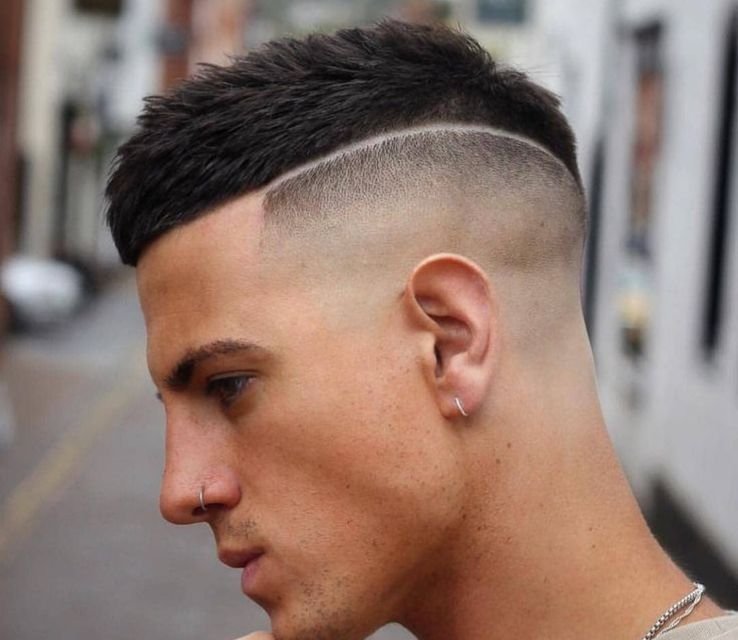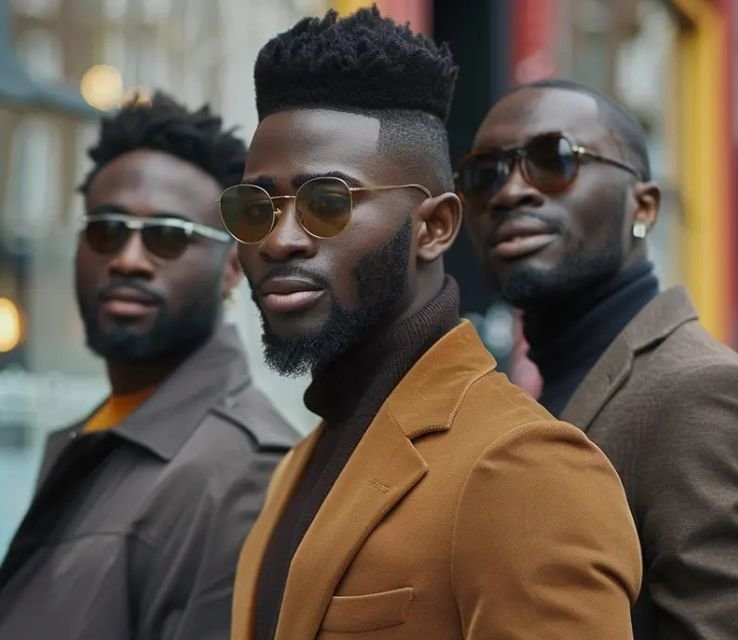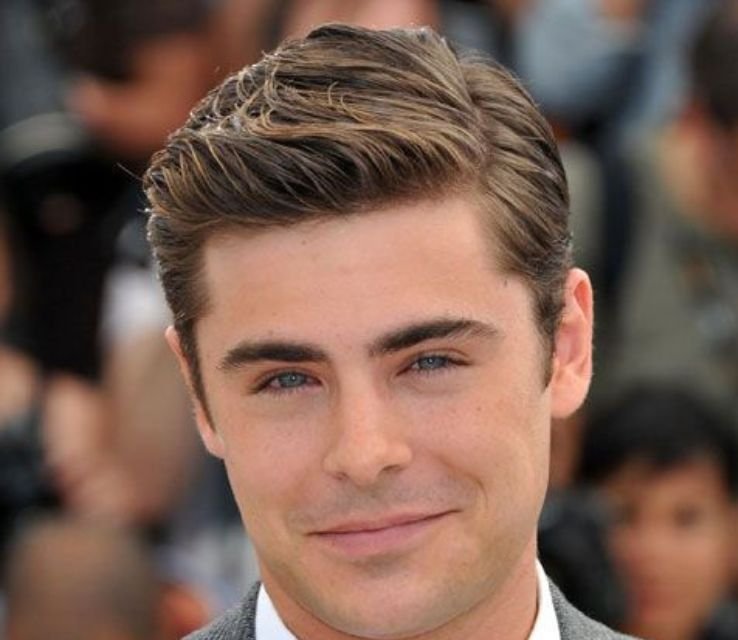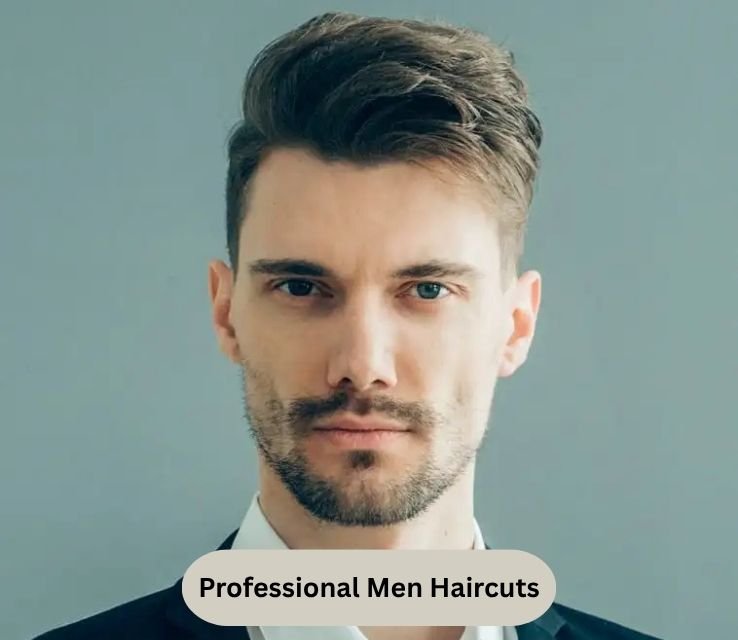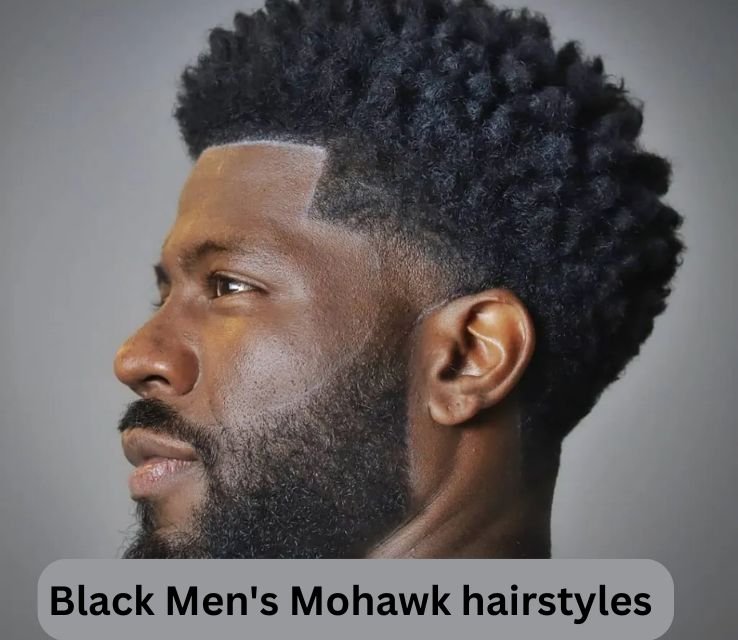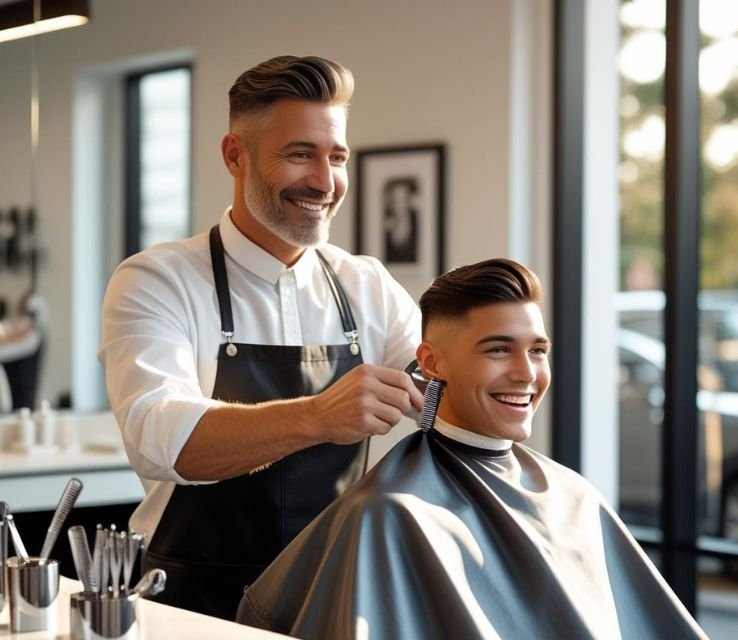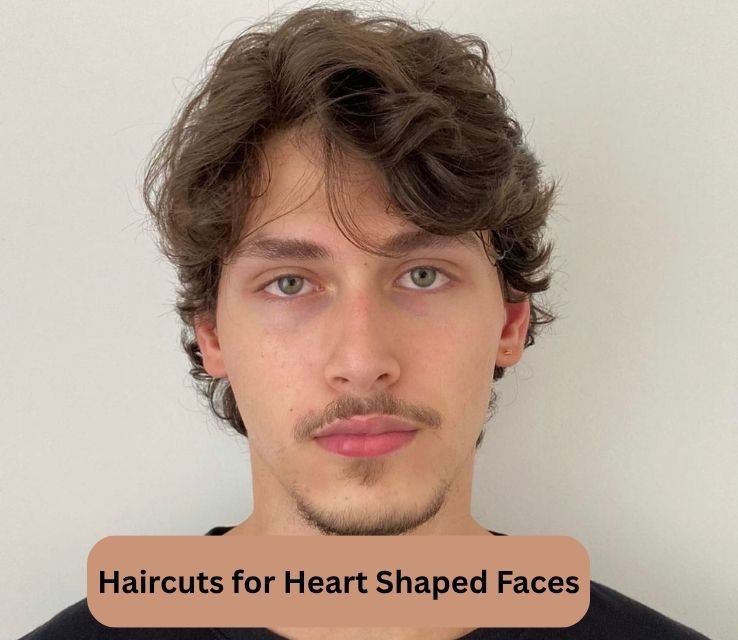Low Fade vs Mid Fade vs High Fade
Low Fade vs Mid Fade vs High Fade understanding the difference between these popular haircut styles is key to choosing the perfect look for your head shape and personal style. Each fade type offers a unique level of contrast and placement, affecting how dramatic or subtle the haircut appears. Whether you’re visiting the barber for the first time or refining your go-to style, knowing how each fade works will help you make the right choice.
What Is A Low Fade?
A low fade is a stylish haircut that seamlessly blends the hair on the sides and back into the shorter lengths, creating a smooth transition that begins just above the ears. This subtle approach to fading allows for a more understated look, making it a popular choice for those who prefer a clean but not overly dramatic style.
The low fade can be paired with various hairstyles on top, from classic crew cuts to longer, textured styles, offering versatility that suits different face shapes and personal aesthetics.
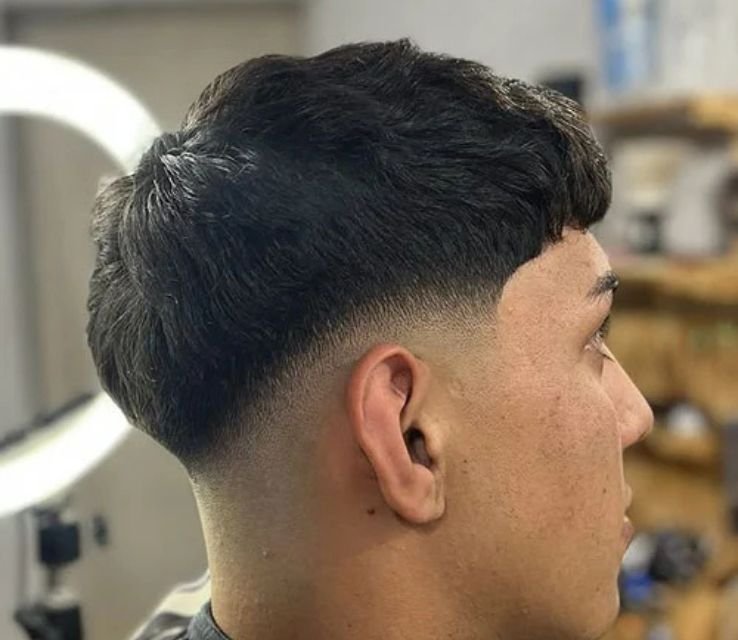
One of the key advantages of the low fade is its adaptability to diverse hair types and textures. Whether you have straight, wavy, or curly hair, this fade can enhance your natural features while maintaining an air of sophistication.
The low fade provides an opportunity to showcase intricate designs or patterns shaved into the fade itself, allowing for personal expression without overwhelming the overall hairstyle. This balance between boldness and subtlety makes the low fade an excellent choice for both professional settings and casual outings, ensuring you always look polished and put-together.
Defining Characteristics of A Low Fade
A low fade is characterized by its subtle yet striking transition from longer hair at the top to shorter lengths at the sides and back. Unlike higher fades that can create a more dramatic contrast, a low fade maintains a soft and natural appearance, making it a versatile choice for various hairstyles.
This gradual tapering typically begins just above the ears, allowing the hair on top to remain prominent while still framing the face elegantly. The result is a clean look that enhances facial features without overwhelming them.
One of the defining aspects of a low fade is its adaptability to different hair types and styles. Whether you have curly, straight, or wavy hair, the low fade can complement your natural texture and enhance the overall aesthetic.
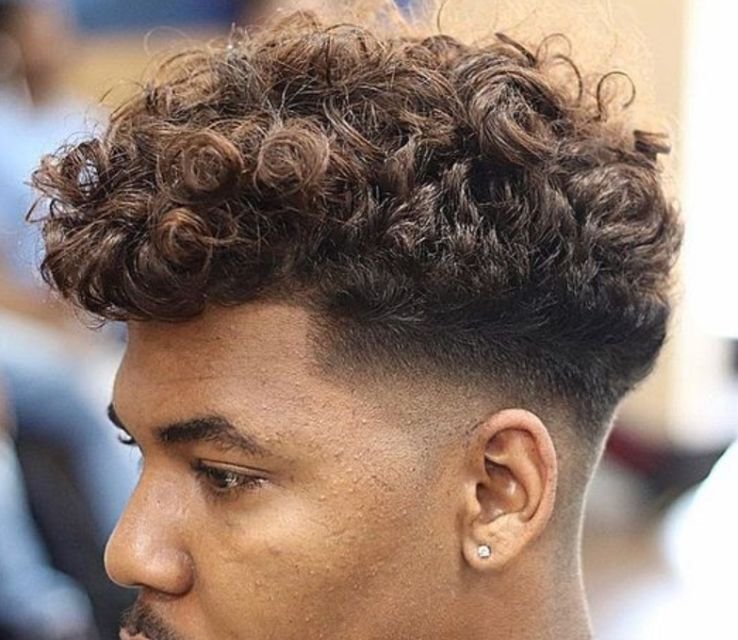
It also pairs well with various hairstyles, from classic crew cuts to trendy textured crops, allowing for personal expression while maintaining a polished finish. Additionally, the low fade requires less frequent maintenance than higher fades, making it a practical choice for those who want style without constant upkeep.
This balance of style and convenience has made the low fade increasingly popular among individuals seeking both sophistication and ease in their grooming routine.
What Is A Mid Fade?
A mid fade is a versatile haircut that strikes the perfect balance between boldness and subtlety. Positioned between a high fade and a low fade, this style offers a gradual transition from longer hair on top to shorter sides, creating a clean yet dynamic look.
This fade can be tailored to suit various hair types and lengths, making it a popular choice among individuals seeking a modern edge without sacrificing versatility.
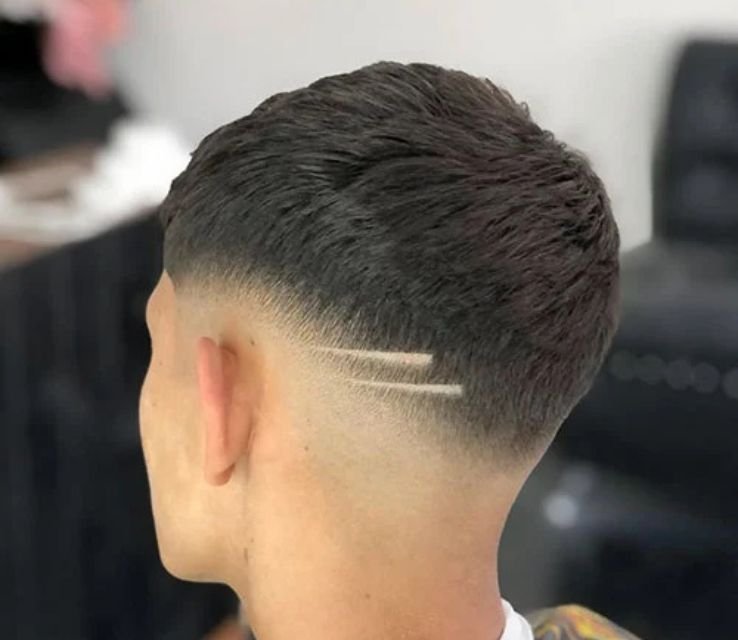
One of the standout features of the mid fade is its adaptability; it can be paired with numerous styles on top, from textured crops to slicked-back looks. This adaptability allows for personal expression, enabling wearers to infuse their unique flair into the cut.
The mid fade is ideal for those who want a polished appearance while maintaining some length up top, making it a great choice for both professional settings and casual outings. The mid fade embodies a sophisticated approach to contemporary grooming, appealing to anyone looking to refresh their style with minimal maintenance.
Defining Characteristics Of A Mid Fade
A mid fade is a versatile haircut that strikes a perfect balance between boldness and subtlety. This style features a gradual transition from short to longer hair, typically starting around the temples and blending seamlessly into the longer hair on top.
The key characteristic of the mid fade is its adaptability; it can be tailored to suit various hair types and lengths while still maintaining a clean, polished appearance. This makes it an ideal choice for both professional settings and casual outings.
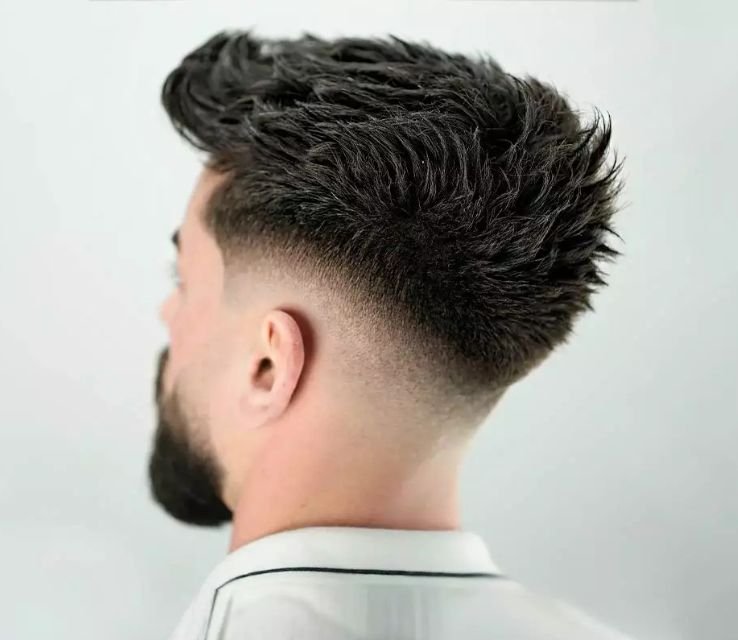
What sets the mid fade apart is its ability to enhance facial features. By providing a structured outline to the face, it can highlight cheekbones and jawlines, giving an impression of sharpness and sophistication.
The mid fade can serve as a canvas for creativity, allowing for various styling options on top from textured crops to slicked-back looks thus appealing to different personal styles.
This haircut not only complements a wide range of aesthetics but also offers an effortless way to stay trendy without being overly flashy.
What Is A High Fade?
A high fade is a dynamic hairstyle that seamlessly blends short and long hair, creating a striking contrast that draws attention. The fade begins high on the head, often around the temples, gradually tapering down to the skin, allowing for a clean and polished look.
This versatile cut can be customized in various ways, from the degree of fade to the length left on top, making it suitable for different hair types and personal styles.
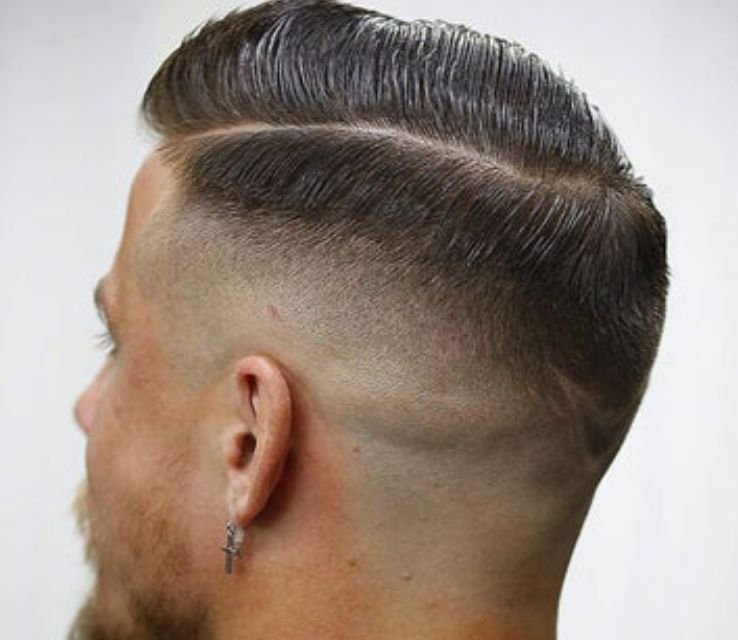
What sets the high fade apart is its ability to enhance facial features while providing a fresh, modern edge. It works exceptionally well with textured hairstyles, such as pompadours or curls, allowing for volume and movement on top.
The high fade can easily transition from casual to formal settings, making it a favorite among professionals and trendsetters alike. Incorporating this style into your grooming routine, you not only stay ahead of the curve but also express your unique personality through hair.
Defining Characteristics Of A High Fade
A high fade is a bold statement in the world of hairstyles, characterized by its seamless transition from longer hair on top to closely cropped sides. One defining feature is the height at which the fade begins typically above the temples, creating an eye-catching contrast that draws attention to the facial structure.
This elevated start allows for versatile styling options on top, whether it’s slicked back, textured, or curly, giving individuals the freedom to express their personal style while maintaining a sharp look.
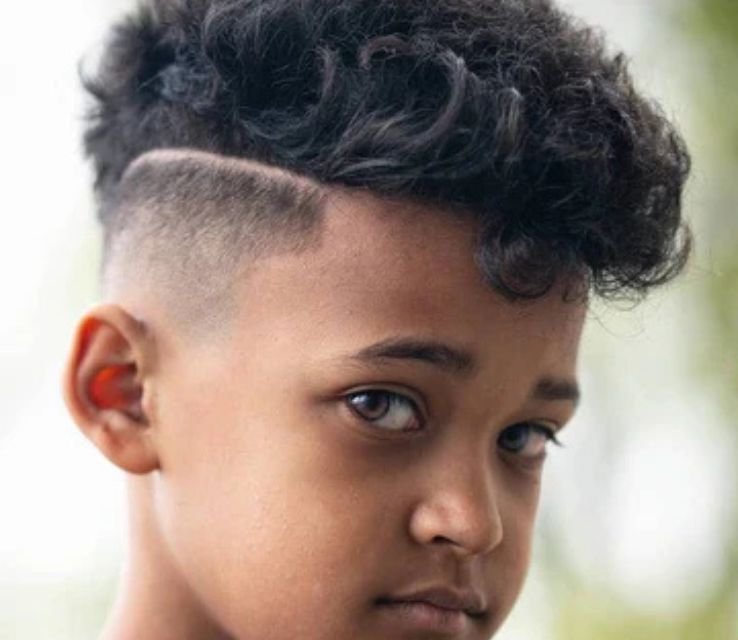
Another striking characteristic of a high fade is its clean and polished appearance, making it a popular choice among professionals and trendsetters alike. The fade can be tailored to suit various hair types and lengths, allowing for customization that enhances individual features.
High fades often incorporate intricate designs or line-ups, adding an artistic flair that elevates the overall hairstyle. This combination of precision and creativity not only makes the high fade visually appealing but also serves as a canvas for self-expression, proving that hair is indeed an art form in itself.
Low Fade vs Mid Fade vs High Fade
When it comes to choosing the perfect fade haircut, understanding the nuances between low, mid, and high fades can elevate your style game significantly.
A low fade starts just above the ears and blends seamlessly into the natural hairline, offering a subtle yet sophisticated look that works exceptionally well for those who prefer a more understated approach.
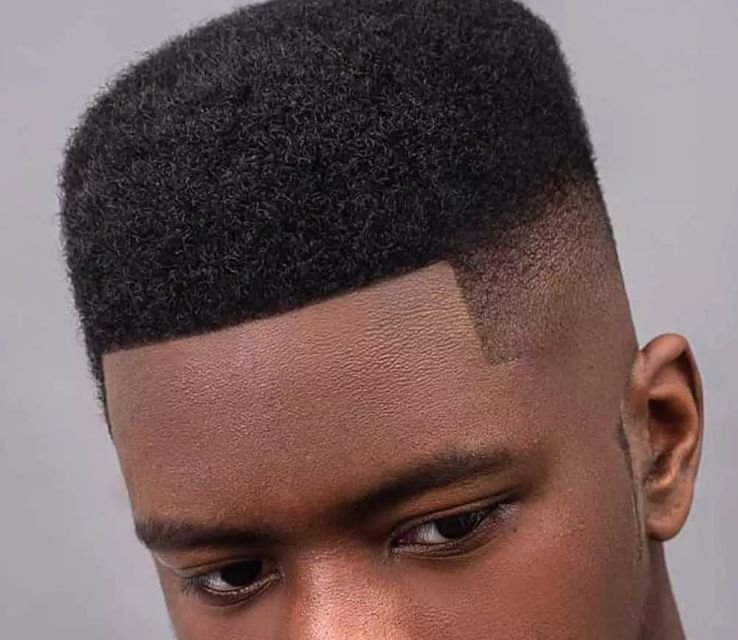
This style is often favored by professionals or those in conservative environments, as it maintains a polished appearance while still showcasing the unique texture of your hair.
On the other hand, the mid fade strikes a balance between boldness and restraint. It begins at the temple, making it versatile enough for both casual and formal settings.
This type of fade allows for creative styling options on top, from textured crops to slicked-back looks, giving wearers the freedom to express their individuality without going overboard. For those looking to make a statement, the high fade is where the real drama lies.
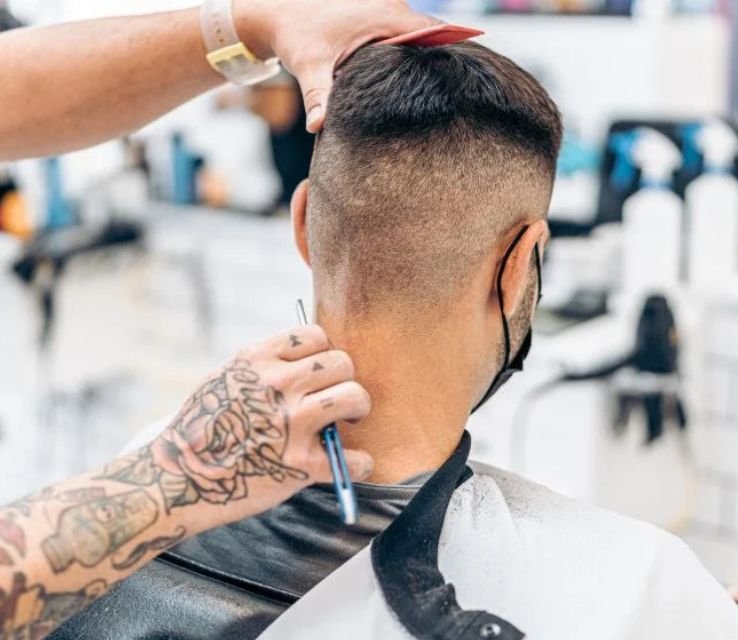
Starting higher up on the head, this cut creates a striking contrast that draws attention and can highlight facial features beautifully, making it ideal for those who want to showcase their personality and flair.
The choice between these fades depends not only on personal style but also on how much maintenance you’re willing to commit to keeping that fresh look intact.
Different Types of Fade Haircuts
Fade haircuts come in a variety of styles, each offering a unique twist on the classic cut. The low fade is perfect for those seeking a subtle transition, allowing for a more understated look that pairs well with longer hairstyles on top.
It gradually blends the hair from the nape of the neck up to the temples, creating a seamless appearance that’s both refined and modern. This type of fade is particularly popular among professionals who want to maintain a polished image without being overly flashy.
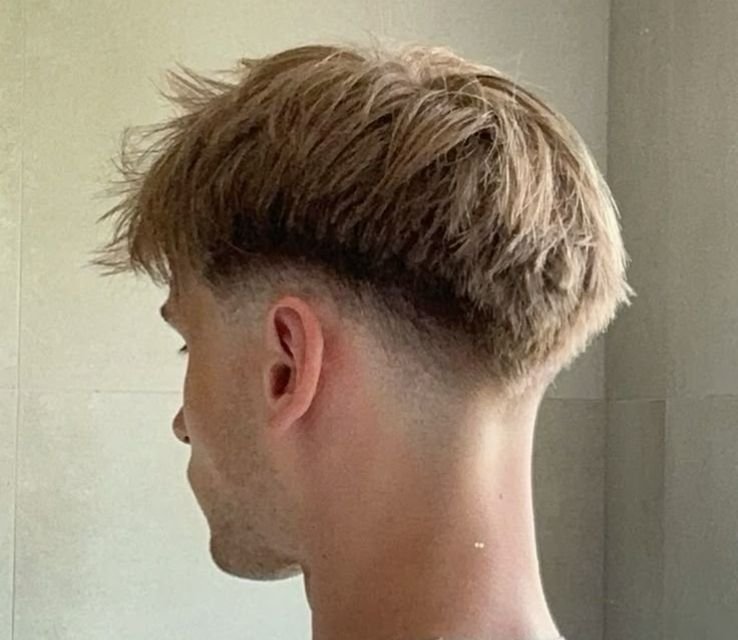
On the other end of the spectrum, the high fade commands attention with its dramatic shift in length. Starting just above the temples, it gives an edgy vibe and works beautifully with bold hairstyles like pompadours or textured crops.
The high fade can also be combined with designs or patterns shaved into the sides, allowing for personal expression and creativity. For those who enjoy versatility, the mid fade strikes a balance between the two extremes, providing enough contrast without being too overwhelming, making it an excellent choice for anyone looking to experiment with their style while keeping things versatile.
Low Taper Fade: 35 Classy, Versatile Haircut Variations
The low taper fade is an artful blend of sophistication and versatility, making it a favorite among modern hairstyles. One of its standout features is its ability to adapt to various hair textures and styles, allowing for countless interpretations.
Pairing a low taper fade with textured curls can create a striking contrast that highlights natural volume, while sleek, straight hair can be enhanced with a polished finish that exudes professionalism.
The low taper fade offers a canvas for creative expression through color and detailing. Subtle highlights can be introduced to accentuate the fade, while intricate designs etched into the fade itself provide a bold statement for those looking to push boundaries.
Conclusion
Choosing between a low fade, mid fade, and high fade ultimately depends on your personal style and hair type. Each fade offers distinct advantages; the low fade provides a subtle, polished look, while the mid fade strikes a balance between boldness and versatility. On the other hand, the high fade delivers a striking contrast that can make a statement. Consider how each fade complements your overall appearance and lifestyle before making a decision. No matter which fade you choose, ensure it reflects your unique personality so visit your barber today to explore the perfect cut for you.

